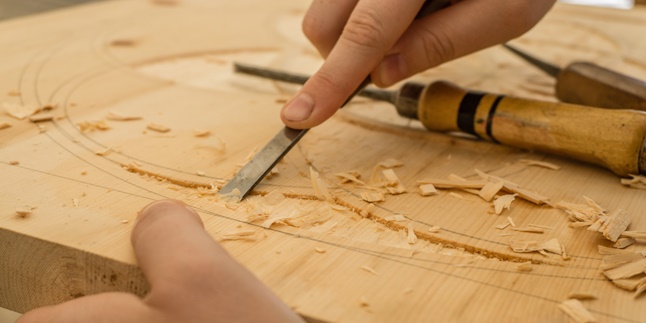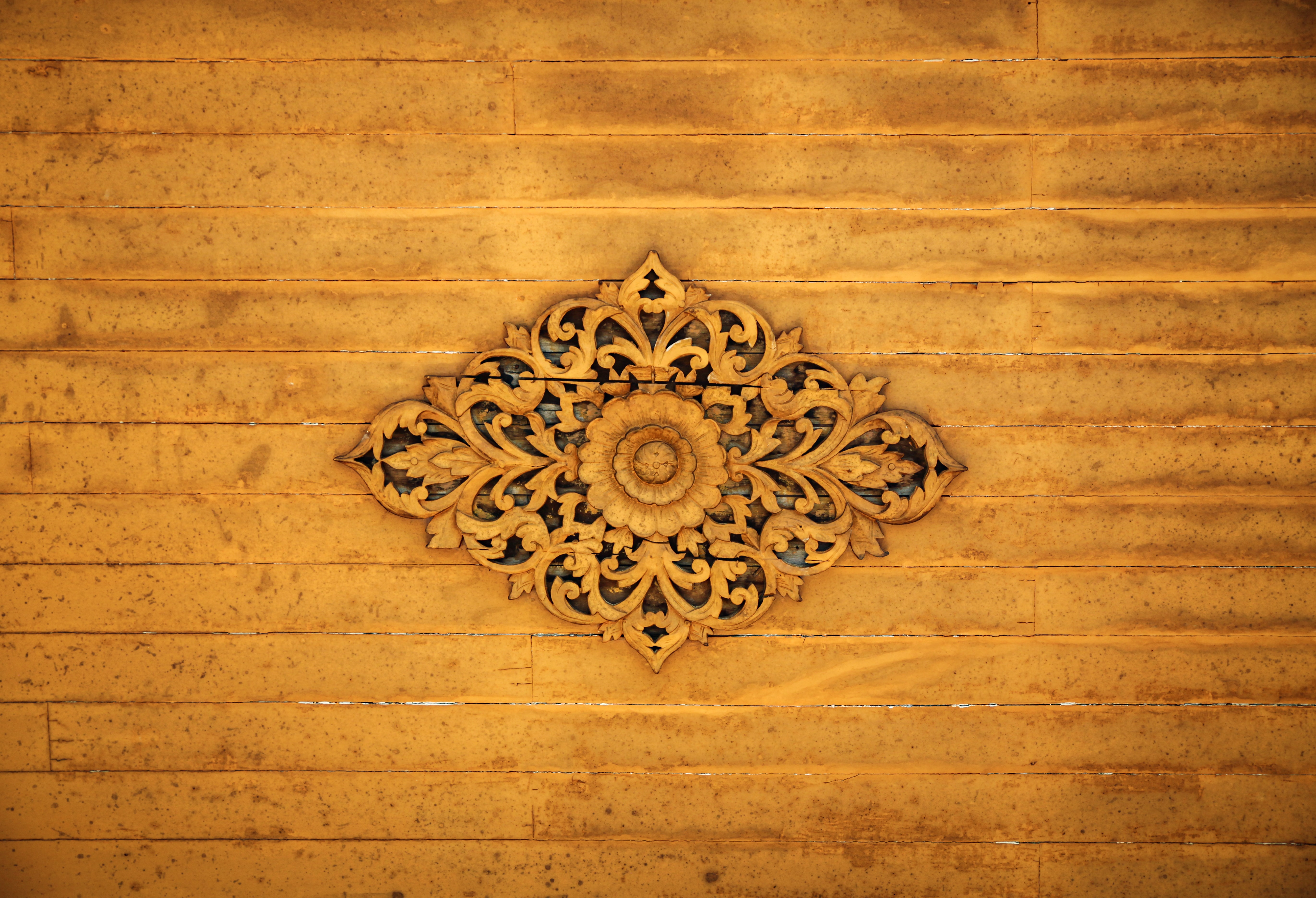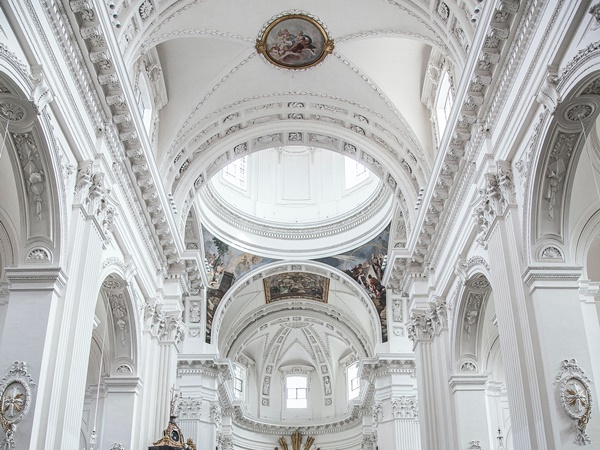Understanding the Meaning of Yaumul Milad, Also Check Other Examples of Islamic Birthday Greetings
In Islamic birthday greetings, we often come across the term yaumul milad. So, what is the actual meaning of yaumul milad?

Kapanlagi.com - Ornaments have various meanings. You may consider them as complements to enhance the beauty of architecture or simply as decorations. However, you can also view them as more than that. In history, ornaments hold deep significance as witnesses of past civilizations. It is common for old buildings to be studied or regarded as cultural heritage.
Since ornaments have diverse meanings according to their functions in each object, you need to learn some basic things to understand them. Here is information about the functions and various types of ornament motifs that you can study.

Meaning of ornaments (Credit: Unsplash)
In general, ornaments have a decorative meaning. Although the function of ornaments is only considered to beautify buildings or certain objects, there is still an added value that makes them more than just decorations. If seen from a historical perspective, architecture or ornaments have a deep meaning and can be said as witnesses to past civilizations.
According to the Kamus Besar Bahasa Indonesia (Indonesian Dictionary), ornaments have a decorative meaning in architecture, handicrafts, and so on. Ornaments can also be interpreted as decorations made (drawn or carved) on temples (churches or other buildings).
Etymologically, the term ornament comes from the Latin word "ornare" which means to complete or decorate. Although it can be said as a complement, the ornaments on historical buildings can be considered as cultural heritage. The style of architecture in those buildings can be used as a study or reference in cultural research in the past.

Meaning of ornaments (Credit: Unsplash)
As previously explained, ornaments have a deep meaning. This meaning cannot be separated from each ornament's function. You can find out various functions in the following explanations.
Purely Aesthetic Function
The purely aesthetic function of ornaments aims to beautify the appearance of an object. You can see it in ornaments found in various products such as furniture, fabric, ceramics, or household appliances.
Symbolic Function
The symbolic function of ornaments is used for representation of signs, hopes, or aspirations. You can find this function in heirlooms or sacred objects. Although emphasizing the symbolic function, the aesthetic function is certainly not forgotten.
You can see ornaments on temple gates or beautiful places of worship that contain many symbols that can be interpreted. The motif of kala or giants on temple gates is a symbol of warding off evil. Another example is the symbolic function of ornaments in the mihrob of the Mantingan Mosque, which is used as a marker of the year the mosque was built.
Constructive Aesthetic Function
As the name suggests, the constructive aesthetic function is useful for enhancing the construction of a work. You can find this function in the horse motif carvings on teak wood or other carvings on chairs. This means that the ornament on the work is functional and cannot be removed.

Various Ornament Motifs (Credit: Unsplash)
Ornaments have their own meaning in every work. Each of their functions has been explained above. Furthermore, you need to know various motifs that are usually used in an artwork.
This is important for you to understand because motifs are the main forms or basic elements of ornaments. Through these motifs, you can determine the theme or basic idea of the ornament.
Geometric Motifs
Geometric motifs are known as the oldest ornaments in the world, originating from ancient Greek civilization, around 900 years before Christ. The shape of this motif uses lines or planes that are generally scientific. These forms usually consist of lines, quadrilateral planes, triangles, parallelograms, rhombuses, and so on.
Human Motifs
As the name suggests, this motif depicts the human body. You can see this motif in ornaments in the form of a complete human body, or only consisting of the head, hands, or body.
Animal Motifs
Ornaments that use animal motifs are usually depicted in a certain style, but can still be recognized as animal forms. Examples of animals that are made into ornaments are birds, such as garuda. There are also snakes in various creations.
Plant Motif
Plant motifs can be found in ornaments that highlight shapes such as tendrils, leaves, or flowers.
Natural Object Motif
Natural object motifs can be found in ornaments that use shapes such as the sun, fire, clouds, or the sea.
Imaginary Motif
Imaginary motifs are used to refer to shapes in ornaments that do not exist in the real world. This motif arises from the imagination, beliefs, and creativity of the person who creates it.
So, KLovers, that is an explanation about the function and various motifs of ornaments. As a work of art or architecture, ornaments apparently have diverse meanings.
(kpl/ans)
Cobain For You Page (FYP) Yang kamu suka ada di sini,
lihat isinya
In Islamic birthday greetings, we often come across the term yaumul milad. So, what is the actual meaning of yaumul milad?
TWICE went viral for showcasing stylish office OOTD stage costumes that are simple yet elegant while promoting SCIENTIST.
Everyday vocabulary in English is very diverse. The meanings of everyday vocabulary in English are certainly important to understand their meanings and usage. Here's the review, KLovers!
The meaning of skip in the language is to pass or skip. But besides that, there is also the meaning of skip in slang language. For that, here is the meaning of skip along with the use of the word skip in slang language.
How to display Instagram filters in stories and reels is actually quite easy. You can directly add the filter during the content creation process. You can also use it directly when you see interesting content from other users.
An active mobile SIM card can be used to enjoy various services and features. Unlike deactivated or expired cards, there are restrictions and even blocking of access to certain services. Find out how to activate a deactivated Indosat SIM card below, KLovers!
Before we delve into the explanation of how to clean trash on your laptop, you also need to know that trash on your laptop consists of various types. There are temporary files, recycle bin files, and cache. It is these trash files that make your laptop's performance decline and disrupt your activities.
Checking the KKS card is actually very easy. For more details, you can follow several steps that will be explained in the review, below
For those of you who are beginners or want to have multiple accounts in this Mobile Legends game, you certainly need to know how to create a new Mobile Legends account. Here are several ways to create a new Mobile Legends account, both for beginners and those who want to have two accounts.
The meaning of mafia comes from the Italian language. The history of the mafia also originated from one of the names of mafia groups in Italy. Let's find out more, KLovers!
Dreaming of someone's death can instantly cause anxiety. Especially if in the dream, the person who died is someone close to us. So, what is the meaning behind dreaming of someone's death?
PPKN is one of the subjects commonly taught to students. The meaning of PPKN is Pancasila and Civic Education. And here are the meanings of PPKN along with the objectives of this subject, and the materials from time to time.